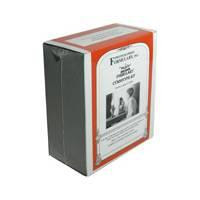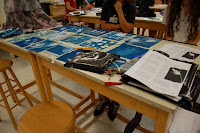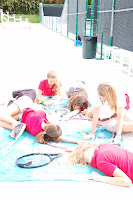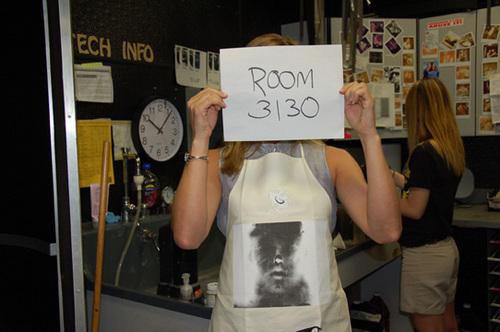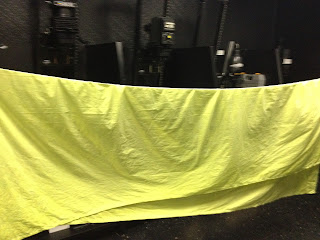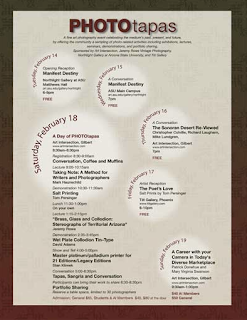I see a class discussion coming from this........feel free to comment here as well students! You are learning the histories and past and current methods of photography in Room3130 - What do you think?
Answer these questions or even just some and earn extra credit points for your thoughts.
1). Will photography eventually be displaced by newer methods of communication? If so, what do you think they will be? Do you see yourself in the future with your camera?
2). Do these traditional methods you have been learning, inform or help you understand your culture? the role of photography? how images have meaning?
3). "Can the method become a metaphor" ?
4). Does your experience with traditional methods aid in your understanding of contemporary content found in current photographic imagery?
Comment here or email Ms. Brock your answers.
Send to Room3130@gmail.com
F295 is pleased to present Visual Literacy, Metaphor, and Method: The Subconscious of Culture a lecture and discussion between photographer Jerry Spagnoli and photo-historian Dr. Jeremy Rowe (Retrieved from the Website for the 2012 F295 Symposium: http://www.f295.org/2012/visual-literacy-metaphor-and-method-the-subconscious-of-culture/ )
Excerpt:
Jerry Spagnoli
For the photographer, the artist who has something to say, this is the moment full of promise. It has been said that a medium can’t really become art until it has lost all utility to the world around it. As the culture moves forward, photography will eventually be displaced by newer methods of communication. The art of photography will be reinvented and made new, but this is not to say naive. The history of photography has been rushed through, barely a pause taken before the availability of some new technique compelled new styles, but the residues of all those past images
linger in the visual subconscious of the culture. Those styles have acquired meaning and significance. They are codes (apologies to Barthes) which can now be used by artists to communicate subtle states, historical contexts and emotional tones which can serve to reinforce or contrast with the more obvious visual content of the image.
The viewer today knows more than they are conscious of about the history of photography and the visual culture we all take for granted. This knowledge is a huge resource for photographers and it can be tapped into by carefully considering what is the appropriate material to carry the intended message. The method can become the metaphor.
Jeremy Rowe
The explosion in interest historic photographic processes has produced a growing interest in creating contemporary images in these ‘alternative formats.’ Emulating vintage aesthetics is a first step in understanding each of these processes. Creative use builds upon a foundation of technical ability, and an understanding of the visual aesthetics of historic photography.
We are inundated by images but rarely are they accompanied by the associated information essential to contextualize and understand them. This information about photographer, size, format, and for historic images, provenance and original context provides important insight into understanding the scope and range of historic processes, and enhances our ability to analyze images in an informed way.
It is important to develop a digital visual literacy that builds on a nuanced understanding of both historical and contemporary cultural contexts, techniques and processes. Knowledge of imagery created using historic processes that extends through digital techniques is essential to prepare photographers to select, explore and create meaningful images. The ability to synthesize the unique aesthetics of historic formats with contemporary content and imagery will extend beyond appreciation of the technical expertise to replicate historic processes, and begin to create a new photographic aesthetic for the 21st century.
